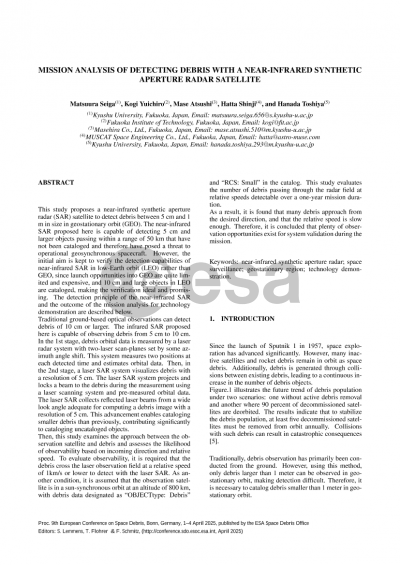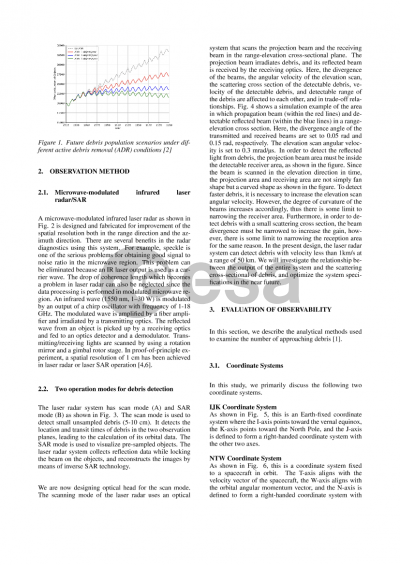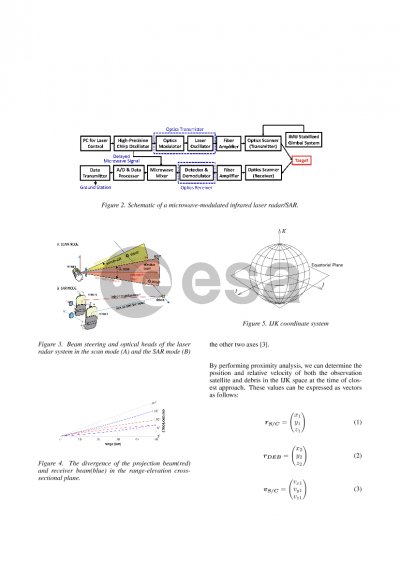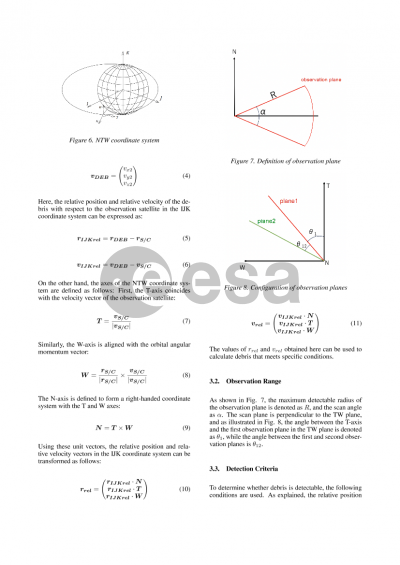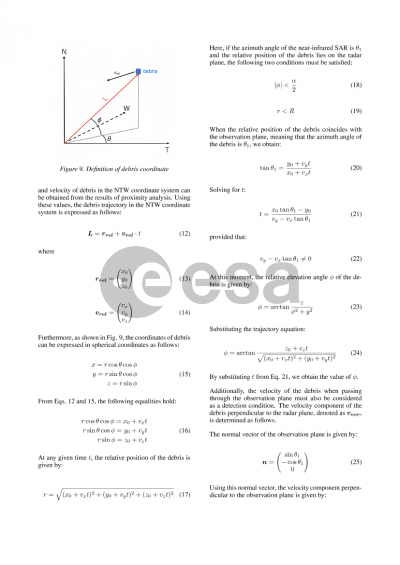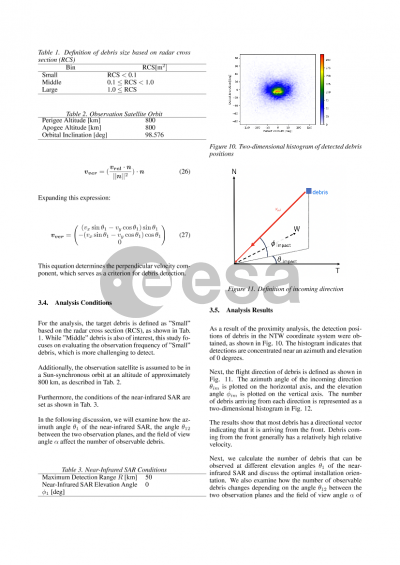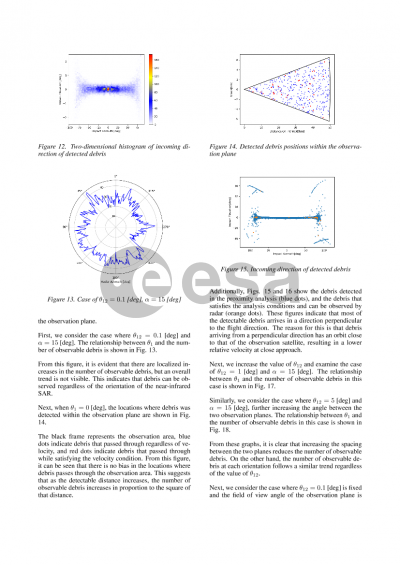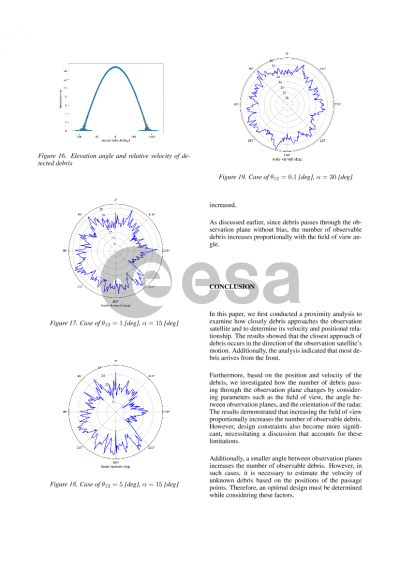Document details
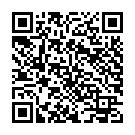
Abstract
This study proposes a near-infrared synthetic aperture radar (SAR) satellite to detect debris between 5 cm and 1 m in size in the geostationary region (GEO). The near-infrared SAR proposed here is capable of detecting 5 cm and larger objects passing within a range of 50 km that have not been cataloged and therefore have posed a threat to operational geosynchronous spacecraft. However, the initial aim is kept to verify the detection capabilities of near-infrared SAR in low-Earth orbit (LEO) rather than GEO, since launch opportunities into GEO are quite limited and expensive, and 10 cm and large objects in LEO are cataloged, making the verification ideal and promising. The detection principle of the near-infrared SAR and the outcome of the mission analysis for technology demonstration are described below.
Traditional ground-based optical observations can detect debris of 10 cm or larger. The infrared SAR proposed here is capable of observing debris from 5 cm to 10 cm. In the 1st stage, debris orbital data is measured by a laser radar system with two-laser scan-planes set by some azimuth angle shift. This system measures two positions at each detected time and estimates orbital data. Then, in the 2nd stage, a laser SAR system visualizes debris with a resolution of 5 cm. The laser SAR system projects and locks a beam to the debris during the measurement using a laser scanning system and pre-measured orbital data. The laser SAR collects reflected laser beams from a wide look angle adequate for computing a debris image with a resolution of 5 cm. This advancement enables cataloging smaller debris than previously, contributing significantly to cataloging uncataloged objects.
Then, this study examines the approach between the observation satellite and debris and assesses the likelihood of observability based on incoming direction and relative speed. To evaluate observability, it is required that the debris cross the laser observation field at a relative speed of 1.8 km/s or lower to detect with the laser SAR. As another condition, it is assumed that the observation satellite is in a sun-synchronous orbit at an altitude of 800 km, with debris data designated as “OBJECT_TYPE: Debris” and “RCS_SIZE: Small” in the catalog. This study evaluates the number of debris passing through the radar field at relative speeds detectable over a one-year mission duration.
As a result, it is found that many debris approach from the desired direction, and that the relative speed is slow enough. Therefore, it is concluded that plenty of observation opportunities exist for system validation during the mission.
Preview
